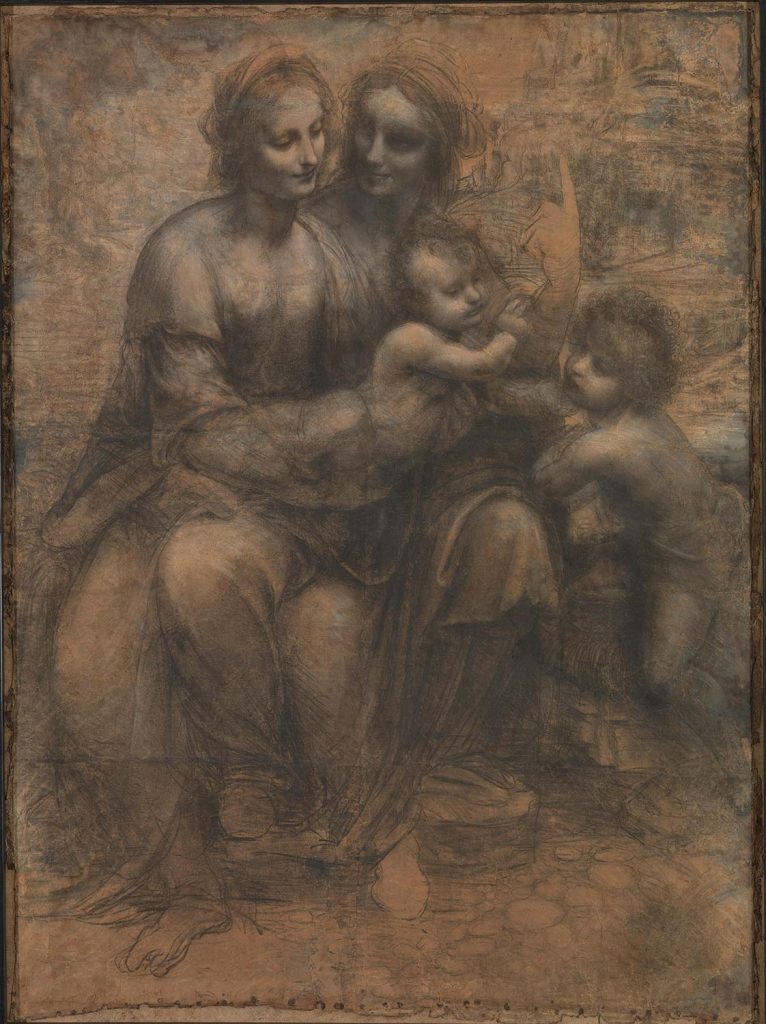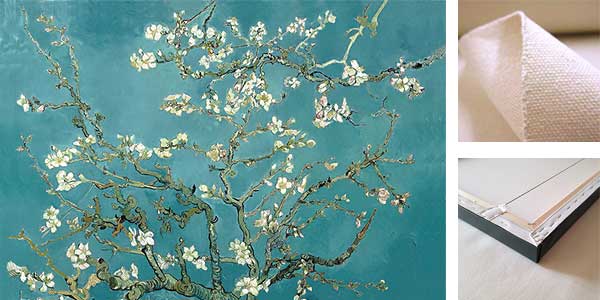
The Burlington House Cartoon by Leonardo da Vinci was created in 1506 – 1508. The painting is in National Gallery London. The size of the work is 141,5 x 104,6 cm and is made of charcoal heightened with white chalk on paper, mounted on canvas.
About the Work
The Virgin Mary sits on her mother’s lap, her attention focused on the wriggling Christ Child. Her mother, Saint Anne, looks intently at her through deep-set eyes and points upwards to the heavens, indicating the child’s divinity. Christ’s cousin, Saint John the Baptist, leans against Anne’s lap as the baby Christ tickles his chin.
Drawing was a crucial part of Leonardo’s artistic process and he produced numerous small-scale studies of animals, human anatomy and landscapes. In fact, we know more about Leonardo as an artist from his drawings than from his paintings, as so few of those survive. This work is particularly important as it is the only surviving large-scale drawing by the artist. Unlike his studies, it is a highly finished composition, and it may be the only record we have of a now-lost painting.
Sheets of paper this large did not exist when Leonardo was alive, so he joined numerous pieces together – the joins are apparent on close inspection. Parts of the drawing are highly finished while other areas, like Anne’s pointing hand, were simply left as outlines. This shows us how Leonardo began by creating rough outlines of the shapes of parts of the body and then, using light and shade, gradually built them up into more rounded shapes. Parts of the drawing are densely shaded and contrasted with lighter areas to give a three-dimensional effect (a technique known as chiaroscuro), for example the figures‘ faces and elements of the draperies such as sections of the Virgin’s sleeve and the folds of fabric which cover Saint Anne’s knees. Read more in National Gallery London
About the Artist
Leonardo di ser Piero da Vinci (15 April 1452 – 2 May 1519) was an Italian polymath of the High Renaissance who was active as a painter, draughtsman, engineer, scientist, theorist, sculptor, and architect. While his fame initially rested on his achievements as a painter, he has also become known for his notebooks, in which he made drawings and notes on a variety of subjects, including anatomy, astronomy, botany, cartography, painting, and palaeontology. Leonardo is widely regarded to have been a genius who epitomised the Renaissance humanist ideal, and his collective works comprise a contribution to later generations of artists matched only by that of his younger contemporary Michelangelo.
Born out of wedlock to a successful notary and a lower-class woman in, or near, Vinci, he was educated in Florence by the Italian painter and sculptor Andrea del Verrocchio. He began his career in the city, but then spent much time in the service of Ludovico Sforza in Milan. Later, he worked in Florence and Milan again, as well as briefly in Rome, all while attracting a large following of imitators and students. Read more in Wikipedia
Order a reproduction of this work (printed on canvas)
